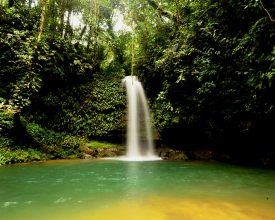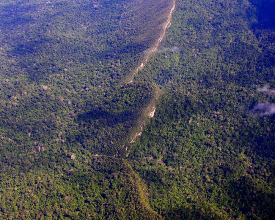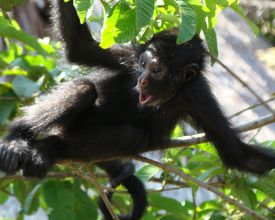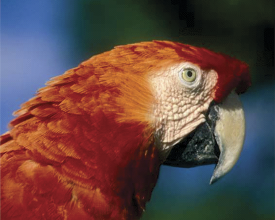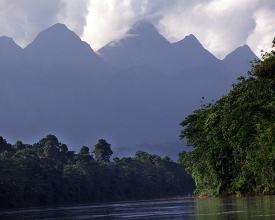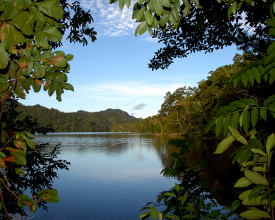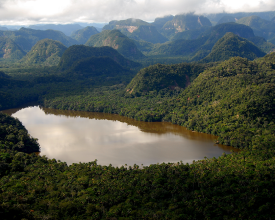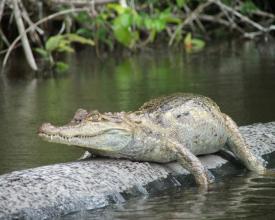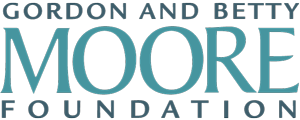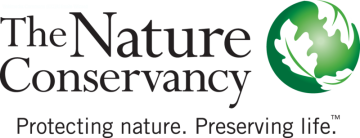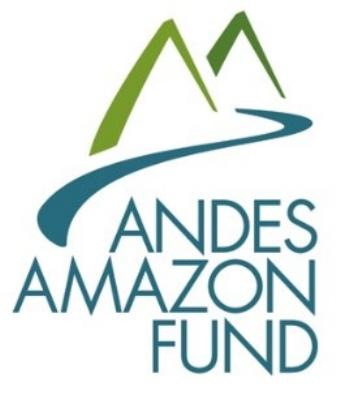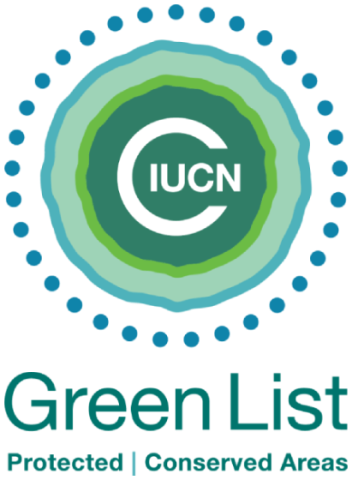
Les contributions de participation sociale comme moteur de l'innovation dans la gestion du parc national de Cordillera Azul, Pérou
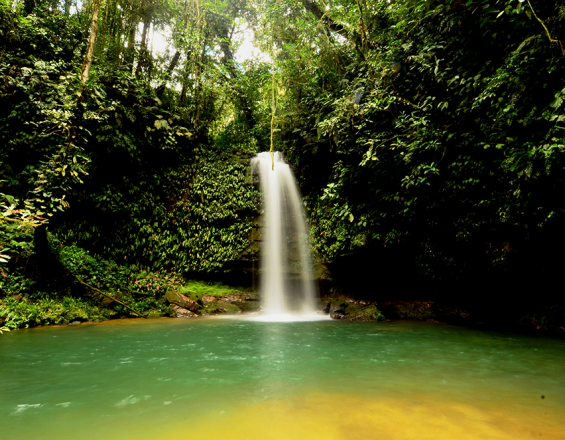
Le cadre juridique péruvien encourage la cogestion des zones protégées et l'application de modèles de partenariat public-privé, ce qui a permis à l'ONG Centre pour la conservation, la recherche et la gestion des zones naturelles (CIMA) de prendre en charge la gestion du parc national de Cordillera Azul (PNCAZ) en coordination avec le gouvernement. Cette association a créé un mécanisme de gestion innovant qui canalise les sources de financement externes pour la conservation, et a mis en œuvre un modèle d'intervention participatif, en travaillant avec les communautés locales dans la zone tampon du parc.
Contexte
Défis à relever
Une importante route nationale longe le côté ouest de la zone protégée. En raison du manque généralisé de planification territoriale au Pérou, cette route est devenue une voie de migration qui permet l'avancée constante de nouveaux établissements humains dans la zone tampon de la zone.
Parmi les principaux défis auxquels le parc national est confronté, il y a la menace constante qui provient de la zone tampon du parc en raison de l'expansion de la frontière agricole et de la migration humaine avec des établissements non planifiés et le trafic de terres ; le chevauchement de la propriété, le manque d'organisation territoriale et la promotion des monocultures. Un autre défi consiste à travailler avec plus de 350 000 habitants des communautés adjacentes au parc, afin d'élaborer des accords locaux qui soutiennent la gestion du parc. Pour relever ces défis, il faut disposer en permanence de ressources techniques et financières qui soutiennent un modèle de gestion de la zone qui soit viable et qui s'inscrive dans une vision stratégique à long terme.
Emplacement
Traiter
Résumé du processus
L'établissement d'un modèle de gouvernance public-privé pour l'administration de la PNCAZ entre le Service national des espaces naturels protégés par l'État (SERNANP) et l'ONG CIMA a permis à cette dernière de canaliser l'obtention de sources de financement durables au cours des 15 dernières années. Ces ressources ont permis d'apporter un soutien important à la gestion de l'aire protégée et de sa zone tampon, grâce à l'application d'un modèle de conservation participatif.
En travaillant selon ce modèle et en générant des stratégies et des outils innovants, le CIMA a facilité le travail avec les communautés locales dans la zone tampon pour générer une vision commune de la conservation et du développement local. En outre, l'articulation des efforts de gestion a été encouragée à différents niveaux du gouvernement et des autorités pour soutenir le micro-zonage et la planification de l'utilisation des terres ; la génération et l'amélioration des lignes directrices et de la planification stratégique communale ont été facilitées ; et la mise en œuvre d'initiatives de production durable et d'initiatives de conservation locales a été réalisée.
Blocs de construction
Alliance public-privé pour une gestion efficace de la zone protégée
Le cadre juridique des zones protégées au Pérou favorise une approche participative et de cogestion, et permet l'établissement de contrats de gestion entre le gouvernement péruvien et des organisations privées à but non lucratif, en tant que mécanisme efficace de soutien à la gestion. Dans ce contexte, depuis sa création, le parc national Cordillera Azul (PNCA) a bénéficié du soutien technique de l'ONG Center for Conservation, Research and Management of Natural Areas - Cordillera Azul (CIMA - Cordillera Azul). Des années plus tard, en 2008, l'État a signé un accord avec le CIMA pour la gestion totale des opérations du parc pour une période de 20 ans. Dans ce cadre, un accord de développement global (GDA) a été signé avec l'Agence des États-Unis pour le développement international (USAID), la Fondation Moore, la Fondation MacArthur, le Field Museum de Chicago et la CIMA, afin d'unir les efforts pour la conservation du PNCAZ et de bénéficier d'un soutien financier pendant la période 2008-2013. Cela a permis d'établir une vision à long terme pour la gestion adaptative du parc, de mettre en œuvre un modèle de gestion participative et d'atteindre une plus grande durabilité financière grâce à l'effet de levier des fonds pour le PNCAZ.
Facteurs favorables
- Le cadre juridique des zones protégées au Pérou favorise la cogestion et l'établissement de partenariats public-privé.
- Engagement à long terme (20 ans) d'une ONG en tant qu'organisation exécutive pour le contrat d'administration totale du PNCAZ.
- Travail coordonné entre l'ONG qui gère le parc et l'organisme public de gestion, le gouvernement local et régional et les communautés de la zone tampon.
Leçon apprise
Le mécanisme de cogestion mis en œuvre par le biais du contrat d'administration totale du PNCA de la CIMA a été déterminant pour l'efficacité de la gestion du parc. La raison en est que la CIMA possède non seulement les compétences nécessaires pour gérer les zones protégées, mais qu'elle a également mis en œuvre des éléments fondamentaux et novateurs pour parvenir à cette gestion. L'un de ces éléments est d'être devenu un agent d'articulation qui permet de promouvoir et d'obtenir la participation des quelque 120 villages et communautés indigènes qui vivent dans la zone tampon, ainsi que des autorités régionales et locales des quatre départements où se trouve le parc (San Martin, Loreto, Ucayali et Huánuco). Ce modèle vise à responsabiliser les communautés voisines de la zone pour la conservation et le développement local. Leur approche de travail répond au plan directeur du PNCAZ, développé par le comité de gestion de la zone protégée, la CIMA et le SERNANP.
Un modèle de cogestion pour une meilleure viabilité financière de la zone protégée
Bien que le PNCA ait bénéficié d'un soutien financier au cours de la période 2008-2013, ces sources ne sont pas considérées comme durables à long terme. C'est pourquoi le CIMA a cherché des mécanismes pour améliorer la viabilité financière du parc, notamment en concevant le projet REDD+ Cordillera Azul. Dans le cadre de ce projet, le CIMA et le Field Museum de Chicago, en tant que partenaire stratégique, ont élaboré un document technique pour vérifier comment le PNCAZ a évité l'émission de plus de 1,6 million de tonnes de CO2 par an provenant de la déforestation, et près de 13 millions de tonnes de CO2 au cours de la période 2008-2015. Cela lui a valu d'être considéré comme un mégaprojet REDD+, validé par des standards internationaux tels que le Voluntary Carbon Standard (VCS) et le Climate, Community, and Biodiversity Standards (CCB). Ces normes ont conféré une légitimité et une crédibilité aux marchés volontaires grâce aux certificats de réduction des émissions de gaz à effet de serre qui n'ont pas été délivrés. Grâce à ces certificats, le projet a pu obtenir son enregistrement dans Markit, un outil de gestion internationale des crédits carbone globaux, ce qui a conduit le CIMA à travailler sur les processus de négociation des crédits carbone dans l'arène internationale.
Facteurs favorables
- L'engagement pour 20 ans d'une ONG en tant qu'organisme d'exécution du contrat d'administration totale du PNCAZ, qui cherche des mécanismes pour assurer la durabilité financière.
- La reconnaissance globale de la contribution des services écosystémiques aux communautés locales et au niveau national, et la promotion de leur valorisation économique, qui a conduit à la création du projet REDD + du PNCAZ.
- Articulation de la structure de cogestion avec un partenaire financier qui permet une plus grande durabilité.
Leçon apprise
Suite aux processus de négociations internationales sur les crédits carbone, le CIMA s'est assuré, fin 2014, un partenaire financier clé : Althelia Climate Fund, avec qui elle a signé un contrat jusqu'en 2021 au moins. Ce contrat permet au PNCAZ de recevoir un financement pour les opérations du parc tout au long de l'année en échange d'un nombre prédéterminé de crédits carbone générés par le projet REDD+ Cordillera Azul. Cela a permis de développer un mécanisme de durabilité financière qui a permis d'investir dans le renforcement des capacités de gestion de l'aire protégée, la mise en œuvre d'initiatives locales de conservation et d'éducation à l'environnement, et l'investissement dans des activités productives durables menées par les communautés locales et les organisations sociales. Tout cela a permis à la conservation et à la protection du parc de devenir une réalité.
Outils innovants pour un modèle de gestion participative de la conservation
La gestion d'une zone protégée de plus de 1,35 million d'hectares avec un niveau élevé d'activité humaine dans sa zone tampon (2,3 millions d'hectares) a nécessité la création d'outils de gestion innovants, axés sur la participation sociale. Le CIMA met en œuvre un modèle d'intervention connu sous le nom de FOCAL, qui est actuellement incorporé dans d'autres zones protégées du pays. FOCAL comprend des outils tels que
- Lacartographie des forces et des usages (MUF) : Elle recueille des informations socio-économiques auprès des communautés et des centres de population, leurs besoins et leurs perceptions de la zone et de l'utilisation des ressources naturelles, afin d'identifier les organisations locales avec lesquelles des alliances doivent être créées pour mettre en œuvre des actions de préservation.
- Lezonage communal participatif (ZPC ) : Il guide le processus de développement du zonage écologique et économique au niveau communautaire afin de parvenir à un consensus au sein de la population concernant l'utilisation durable du territoire et de ses ressources naturelles.
- Règles de coexistence: Elles permettent de parvenir à des accords au niveau du centre habité ou de la communauté, de définir des codes de comportement et d'assurer la stabilité du processus de planification et des plans de qualité de vie qui en découlent.
Facteurs favorables
- Outils de gestion novateurs axés sur la participation sociale.
- Renforcement des capacités des communautés locales.
- Assistance technique et accompagnement pour le développement de processus productifs.
- Accords locaux pour soutenir la gestion de la zone.
- Promotion de l'amélioration de la qualité de vie des populations locales.
Leçon apprise
Les plans de qualité de vie créés par les communautés ont une durée de vie de 10 ans et sont basés sur la définition par les communautés de leur propre concept de qualité de vie, dans le cadre des règles de coexistence. L'appui technique fourni par la CIMA est essentiel dans la planification et la mise en œuvre de ces plans, de même que les ressources financières fournies par Althelia. Leur mise en œuvre a permis le renforcement institutionnel des organisations communautaires et des capacités locales à mettre en œuvre des initiatives productives et à mener des négociations communautaires avec les autorités. En outre, dans le but de consolider les plans de qualité de vie, la CIMA signe ce que l'on appelle des accords bleus ou des accords de conservation avec les communautés et les centres habités, comme preuve d'un engagement durable. En conséquence, les deux acteurs s'engagent à assumer des responsabilités concrètes au fil du temps, et le chef du PNCAZ et les autorités locales de chaque centre habité jouent un rôle de surveillance afin de garantir le respect de ces engagements.
Les gardes forestiers communautaires dans la gestion participative
La conservation participative est un principe qui sous-tend la stratégie de protection et de conservation appliquée dans le PNCAZ, car l'un des défis est d'assurer un contrôle et une surveillance efficaces de l'aire protégée. Cela est nécessaire car l'un des défis est d'assurer un contrôle et une surveillance efficaces de l'aire protégée avec seulement 45 gardes forestiers couvrant 1,35 million d'hectares et un périmètre de près de 1 000 km. Ces conditions ont exigé une stratégie participative avec l'incorporation de gardes forestiers communaux. Cela a permis d'inclure les fronts de défense des populations, les rondes paysannes, et même les autorités locales elles-mêmes, dans les stratégies de contrôle et de surveillance, dans le cadre du plan directeur du parc. Tous ont pris l'engagement d'aider à la conservation et à la protection du parc, ou de définir et de planifier les implantations des populations pour éviter leur avancée et le changement d'affectation des terres.
Facteurs favorables
- Stratégie de contrôle et de surveillance avec le soutien des gardes forestiers communaux.
- Niveau élevé d'implication des autorités locales et des communautés locales dans la gestion participative de la zone.
- Visibilité de l'importance de la conservation de la forêt, de sa diversité biologique et de ses services écosystémiques pour le développement local.
Leçon apprise
Dans le cadre des stratégies élaborées pour améliorer l'efficacité de la gestion du PNCAZ, le front de protection du parc a été renforcé. Ainsi, aux 45 gardes officiels recrutés par la CIMA et officiellement reconnus par le SERNANP, s'ajoutent des gardes communaux élus par les assemblées générales de chaque communauté. Les gardes communaux effectuent une rotation tous les deux mois entre les postes de contrôle de la zone protégée. Ils soutiennent directement les efforts de protection du parc, tout en restant intégrés dans leurs communautés locales. Cette stratégie vise à créer un environnement favorable et collaboratif avec les communautés locales dans la mise en œuvre des actions de conservation du parc, ce qui a permis de poursuivre la cogestion et le travail coordonné sur le territoire.
Impacts
- Une gestion renforcée : Le partenariat de collaboration public-privé a permis d'établir une vision consensuelle à long terme, pour une gestion adaptative de la PNCAZ, et de consolider un mécanisme de durabilité financière et un modèle de gestion participative qui a renforcé la capacité de gestion de la zone.
- Viabilité financière : La consolidation d'un mécanisme de durabilité financière par la négociation de crédits carbone sur le marché international a permis à la CIMA d'obtenir un partenaire financier clé : Althelia Climate Fund, avec lequel un contrat a été signé jusqu'en 2021. L'objectif est de recevoir des fonds annuellement en échange d'un nombre prédéterminé de crédits carbone générés par le projet grâce à la réduction des émissions de carbone dues à la déforestation et à la dégradation des forêts (REDD+) du PNCAZ.
- Gestion participative de la conservation : Ce modèle de gestion, combiné au développement d'outils innovants adaptés à la réalité locale, a permis la mise en place de plans de qualité de vie sur une période de 10 ans. Dans ces plans, les communautés reconnaissent l'importance de la conservation de la zone pour leur développement.
- Confiance des acteurs locaux : Le travail permanent du CIMA a créé un environnement favorable et collaboratif avec les communautés locales pour la mise en œuvre des activités de conservation. Cela se traduit par des leçons apprises qui peuvent être appliquées dans d'autres régions.
Bénéficiaires
Il n'y a pas d'établissement humain à l'intérieur du parc, mais il y a des signes de communautés indigènes isolées. La zone tampon du parc présente une activité humaine en raison de ses 520 centres habités et d'un total de 350 000 habitants.
Objectifs de développement durable
Histoire
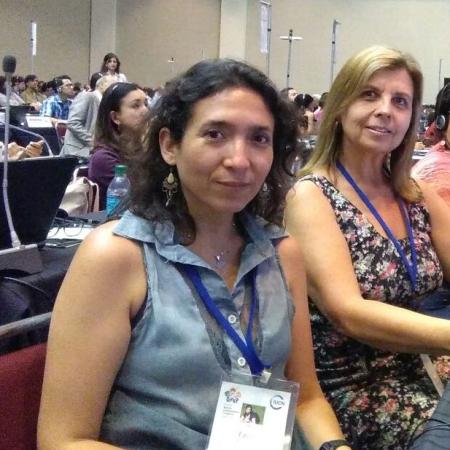
"Nous pouvons constater que les mécanismes de cogestion mis en place dans le cadre du contrat d'administration apportent une valeur ajoutée aux zones protégées. Cette synergie est essentielle pour le parc national de Cordillera Azul, car la CIMA a non seulement la capacité de gérer les zones protégées, mais elle a également été en mesure de mettre en œuvre des éléments novateurs pour assurer cette gestion. L'une de ces innovations est le développement de mécanismes permettant d'assurer la viabilité financière à long terme de la zone. Une autre innovation consiste à devenir un agent de coordination qui favorise la participation des communautés de la zone tampon, ainsi que des autorités locales et régionales. En conséquence, et malgré toutes les menaces qui pèsent sur le parc, les effets de ces menaces ont diminué. Le parc a actuellement un taux de déforestation nul, il n'y a pas d'activités illicites à l'intérieur du parc et c'est la zone protégée qui présente le niveau de conflit socio-environnemental le plus bas du système national.
La réalisation de ce modèle de gestion a nécessité un processus complet d'apprentissage et de gestion adaptative afin de développer des outils innovants dans le cadre des exigences de la dynamique locale et mondiale. Ce développement a été bien analysé, correctement planifié et orienté vers des objectifs précis. Dès 2008, nous avons pu établir une vision à long terme pour le PNCA avec l'Institut national des ressources naturelles (INRENA), qui est ensuite devenu le SERNANP. Nous avons également travaillé dans la zone tampon avec les communautés locales dans le cadre du modèle de renforcement des capacités locales pour la conservation (FOCAL), en les articulant avec les acteurs institutionnels locaux.
En outre, le développement du projet REDD+ du PNCA en tant que stratégie de financement, depuis la phase de conception jusqu'à la définition de la méthodologie à appliquer pour vérifier comment la zone évite l'émission de carbone, a été un énorme processus d'apprentissage. Nous avons ouvert la voie, au niveau national, au développement d'une initiative REDD+ qui fonctionne au niveau méthodologique. Nous avons établi un contrat jusqu'en 2021 avec le Fonds Climatique Althelia en tant que partenaire financier, soutenu par les crédits carbone générés par le projet REDD+. Cela a permis aux crédits carbone générés chaque année de se transformer en un soutien financier qui finance les opérations du PNCAZ et d'autres activités productives durables".
